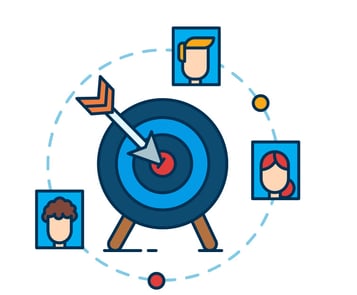By Jessy Smulsky (Tech Writer)
How Can Smart IT Managers Leverage One Of The Most Powerful Marketing Channels For MSPs?
Your MSP (Managed Service Provider) business needs a good marketing strategy, but it’s getting harder and harder to rise above the noise on social media, or to reach out to customers at the right time using customer journeys.
Nevertheless, developing a sound marketing strategy is crucial for Managed Service Providers.
Let’s cut to the chase — no other marketing tactic delivers as much ROI as email marketing:
The average return for email marketing in 2020 was $38 for every $1 spent. In other words, email marketing generates a whopping 3,800% ROI. It’s a no-brainer! MSPs are up against tight budgets and a temperamental economy, which means every investment needs to count. Whether you already have an email list or plan to start from scratch, here’s what you’ll need to cash in on email marketing:
The Elements Of Email Marketing
A Lead Magnet:
Lead magnets attract leads (hence the name). Common examples of a lead magnet include guides, whitepapers, downloadable templates, etc. Lead magnets walk a fine line between offering value and overloading prospects, so be mindful of the subject matter and length. People want the quick and easy on something that helps make their life easier.
A Sign-Up Form:
Your website is one of your greatest marketing and sales conversion tools. Use it to the fullest by designing customer journeys that lead to an optimized sign-up form. This is where you’ll collect personal information, including email addresses. Make sure that what you give away is equal in value to what you ask for in return. Forms should be short (no longer than a few input fields) and virtually effortless to submit.
Email Marketing Platform:
If you’re going to maximize ROI, you need specialized software that helps you organize subscribers, customize email templates, schedule campaigns, and measure success. Here are the top email marketing platforms of 2021.
Email Marketing Best Practices
Don’t purchase email lists:
For relationships to work, they must be reciprocal. In the same way that you can’t buy friendship, you shouldn’t buy subscriber lists, either. For starters, there’s a good chance you’ll waste precious dollars on email addresses and individuals that have zero interest in your services. Additionally, if the recipient didn’t personally subscribe, they might mistake your company for spam or junk.
Segment your email list into smaller groups:
Getting the right message to the right person takes a deep level of understanding and personalization. In other words, you shouldn’t attempt to have the same conversation with everyone. There are numerous ways to segment email lists.
What Makes the Most Sense For Your Industry And Sales Goals?

Job Title
Industry
Location
Purchasing Behavior
Sales Funnel Placement
Behavioral Changes
Know What Your Customers Want:
Which blogs, social media posts, or prior emails resonated best with audiences? What questions do they ask repeatedly? What objections do you hear the most? What topics are your competitors covering? Beyond the information you deliver, give subscribers the opportunity to tell you what they want. For example, ask how often they’d like to receive information, or provide a list of topics and encourage them to select those that interest them the most.
Have an Unsubscribe Strategy:
The law requires you to include an unsubscribe link in every email, but just because a subscriber opts out, doesn’t mean all is lost. As part of the unsubscribe process, give the option to adjust email frequency, ask why they’re leaving, or suggest a different way to stay connected with the company. Worst case, they choose to leave your email community but offer valuable information on how to make the experience better. Best case, they adjust their preferences and give it another go.
Know What To Measure:
There are many metrics you can track to gauge how well emails are performing. The main thing is to learn as much as possible about your subscribers so that, eventually, you'll have enough context to deliver the ideal message to the right person at the right time, so that you can turn leads into paying customers.
Prioritize The Following Metrics:
Delivery Rate:
Measures the strength and accuracy of your email list and segmenting strategy.
High Rate = The Right Audience
Low Rate = The Wrong Audience
Open Rate:
Measures how many subscribers felt compelled enough to open the email.
Indicates the effectiveness of your subject line.
Subject lines with more than 25 characters perform best.
Click-Through Rate:
Measures interest, engagement, and personalization tactics.
High Click-Through = Highly-Relevant Content
Low Click-Through = Poor Relevancy
Conversion Rate:
Measures how many people clicked on a link after opening an email.
High Rate = High ROI
Low Rate = Low ROI
Email Marketing: You Can Do It
Email marketing takes time to get right, but with an iterative approach that continuously learns from subscriber behavior and applies data to improve the strategy, you can qualify more high-value leads, increase sales, nurture customer relationships, and upsell services.
Looking for more ways to influence the customer journey in your favor? SherpaDesk is a leading helpdesk solution with the tools and intuitiveness to streamline project management, billing, and customer service experiences.









comments